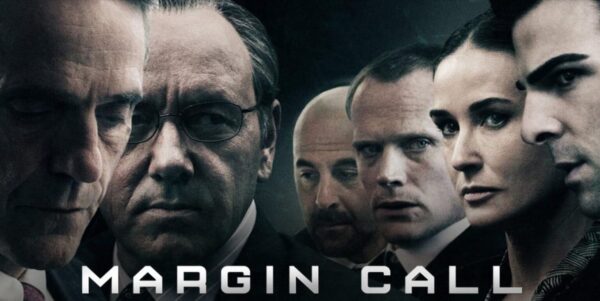Margin Call was a 2011 film directed and written by J. C. Chandor. The film stars Kevin Spacey, Jeremy Irons, Paul Bettany, Zachary Quinto, Simon Baker, Penn Badgley, Demi Moore, Mary McDonnel and Stanley Tucci.
The subject of the film is financial crisis of 2007-2008. It examines the crucial 24 hours prior to the onset of the crisis. It details the events that took place at a major Wall Street investment bank.
It’s been widely believed that the bank that is at the center of the story Lehman Brothers, or it is at a minimum heavily inspired by Lehman Brothers. But the director of the film has clarified that this isn’t the scenario.
What are the arguments to and for and
(c)Netflix
Reasons to Believe Margin Call is Based on Lehman Brothers
The most popular reason for the bank to be mentioned in the film that is inspired by Lehman Brothers is the name of the CEO of the movie, John Tuld, played by Jeremy Irons.
The Chief Executive Officer at Lehman Brothers at the time of the financial crisis was Richard Fuld. Both names are rather unique, so it might appear to be a bit of an oddity to identify your CEO in this manner.
Investment bankers who were based on Wall Street at the time of the financial crisis have said their dress codes used in the film was quite Lehman Brothers 2008. The dress code of the time varied among the various banks however, Lehman Brothers was more formal than the other banks.
Reasons to Believe Margin Call is Not Based on Lehman Brothers
The most convincing argument in favor of that the institution in Margin Call not being based on Lehman Brothers comes from the director himself.
Margin Call was J.P. Chandor’s debut feature film, and he wrote the script as well as directed the film. He was raised by banks, which is another reason for the portrayal of Wall Street is so realistic. His father worked as a banker at Merrill Lynch.
When he was interviewed following the film’s release J. P. Chandor said that the idea to create Margin Call actually came before the financial crisis of 2005.
The story is told by the author that together with a group of friends, he took out a loan of 10 million dollars from the financial institution to purchase a property located on the edge of SoHo and plans to remodel the building. At 37, he had already an award-winning documentary director and producer and was looking for ways to get into real property. The group was amazed at how simple it was to obtain the money however, New York City’s housing market had been active in the early days.
The following year, his godfather’s friends was an investment banker been worried about the economy, and advised the group in clear terms that they must sell their property the building as fast as they can. They had had several offers for their property, and had listened to for his recommendations. It’s amazing that they were off the property market when the financial crisis struck. The timely advice impressed J. P. Chandor and laid the foundation for the movie that was to be made. He explained that:
“That was the first nugget, that idea of the guy who is walking around and thinks he knows what is about to happen, but the rest of the world is pressing the accelerator button.”
Following the release of the film, The Financial Times brought one of the investment bankers to view the film and interview the man afterward. The investment banker said that the depiction of life at the Wall Street investment bank was exact, right including the clothing that they wore and the design for the corporate headquarters. He was of the opinion that the dismissal of Eric Dale (played by Stanley Tucci) was precise, based on his experiences his time in Merrill Lynch.
In his view the company depicted did not intend to represent Lehman Brothers, but a illustration of an investment bank at the time.
John Tuld’s name is often used to indicate the bank featured in Margin Call being based on Lehman Brothers, others believe that John Tuld’s name actually a mix of Merrill Lynch’s former chief executive John Thain and Lehman Brother’s former CEO Richard Fuld. This suggests that the bank featured in Margin Call as more of a general bank instead of a specific one. Lehman Brothers.
Some people believe that the institution in the film is like Goldman Sachs. Goldman Sachs also hedged early and reduced its stake in mortgage-backed securities just like the bank featured in Margin Call. This bank didn’t go into bankruptcy, unlike Lehman Brothers, which did.
Is Margin Call Based on Lehman Brothers? – The Verdict
The film is completely inspired by the culture that was prevalent within Wall Street investment banks at the time. The film is believable partly due to the director’s personal experiences, however he states that it’s not meant to portray a real-life company.
As we’ve seen, the image of a bank could also be a representation of Merrill Lynch, or Goldman Sachs. In reality, it could could be JP Morgan or Citigroup, which were also fined because they bet against customers in the turbulent financial times.
Lehman Brothers is the first bank people consider when talking about the financial crisis that erupted in 2007 and 2008 mostly due to the fact that it was bankrupt, however it’s worth mentioning this investment institution depicted in Margin Call didn’t go bankrupt.
The most important argument, of course is that the scriptwriter and director has said that the fictional investment bank featured in Margin Call is fictional.




